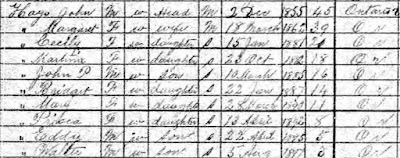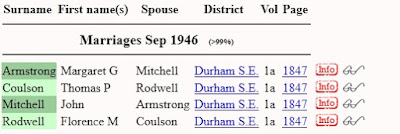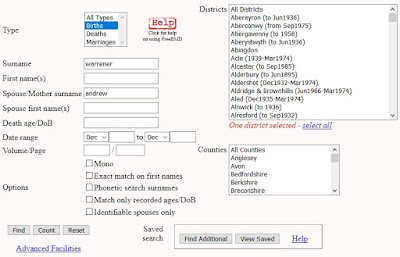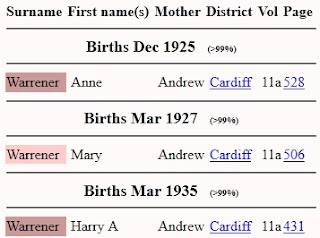Yet two sources are still commonly treated as if they must always be correct: grave markers and newspaper articles. In my post from 2013, "Zombie in the census?" I dispelled the notion that grave markers are always correct and that the dates chiselled on them need to be verified through other documents. However, what about newspaper articles? I'm not talking about death notices or obituaries1 but articles written by journalists to highlight a newsworthy event that affected our ancestor.
Let's look into this article about the death of Private Walter J. Hayes from the November 9th, 1916 edition of The Ottawa Citizen:
 |
| "Mere Boy But Dies Like Man," The Ottawa Citizen, 9 Nov 1916, p. 10, col. 2; digital images, Newspapers.com (www.newspapers.com : accessed 19 Jul 2019). |
"Pte. Walter J. Hayes, sixteen years of age, youngest member of his battalion and one of the youngest members of the Canadian forces serving in the ranks overseas, has made the supreme sacrifice on the field of action, "somewhere in France."That is quite the claim and would mean that Walter was born about 1900 and probably would have lied about his age when he joined the Canadian Expeditionary Force. Not unheard of but we really need to do our due diligence in our research to confirm this very important detail in the article.
For attestation papers from the First World War for those that served in the Canadian Expeditionary Force my go to site is the Library and Archives Canada page "Personnel Record of the First World War". On that site one cannot only see the attestation papers but also download a PDF copy of the surviving service file. Searching for Walter Hayes returns 8 entries but in the article they say his name is "Walter J. Hayes" and there is a Walter Joseph Hayes, regiment number 177799, listed in the search results. A quick check of the other "Walter Hayes" listed show that they either enlisted too late to be our Walter J. Hayes or they lived and enlisted in the wrong place. So seem that Walter Joseph Hayes is the one we want. It helps that the next of kin address on his attestation matches that of his mother, Mrs. Margaret Hayes of 391 Cooper Street, that was provided in the article. Only one "minor" issue...he stated in his attestation that he was born "Aug. 4th.,1896." when he enlisted in Ottawa on November 19th, 1915.
That makes him 19 years and 3 months old when he enlisted. Definitely not the 16 years old when he died between the 21st and 22nd of October, 19162. But did he lie about his age to serve? Where else can we look? How about the census enumerations of Canada? If he was born in 1900 then in the 1901 census he would be recorded as being 0 or 1 years of age. Fortunately the article goes on to list the names of several siblings of Walter: Edward J., John P., and Miss Margaret P., along with his mother Margaret. This can help with our searching.
Using Ancestry.ca we find the family with the surname recorded as "Hays"3 living in the Wellington Ward census sub-district of Ottawa:
There in that census it is recorded that he was born on August 5th, 1897 in Ontario. Hmmm...5th instead of the 4th and 1897 and not 1896. Well at least he isn't listed as being born in 1900. That means that he isn't 16 years old when he died or even enlisted. One thing to keep in mind that the birth date listed in the census isn't always right. It all depended on who answered the questions and if they remembered the details correctly. I've personally found that the birthday has been wrong more times than right in the 1901 census of Canada.
Can we find a birth registration or baptism record for Walter James Hayes to clear up the mystery of when he was born since we have two possible birth dates for him?
I couldn't find an Ontario birth registration record for him but I did find a baptism record for him in the records for St. Patrick Roman Catholic Church in Fallowfield:
 |
| Saint Patrick Roman Catholic Church (Fallowfield, Ontario, Canada), p. 61, B. 15, baptism of Walter Joseph Hayes, 22 Aug 1897; FHL microfilm 1,302,152, item 5. |
"On the twenty second day of August in the year of Our Lord one thousand eight hundred and ninety seven We the undersigned Parish Priest of this parish baptized Walter Joseph born on the 4th inst of the lawful marriage of John Hayes and Margaret Weathers of this parish. The godfather was James Hayes and the godmother was Ann Wallace who have declared that they cannot signWith the baptism taking place on August 22nd, 1897, a few weeks after he was born on the "4th instant4" it means that it is highly likely that he was born in August 4th, 1897. A combination of the dates recorded in the census and his attestation papers.
J A Sloan Pt"
With all that information now in our possession we now know that he was 18 years and 3 months old when he enlisted in the C.E.F. and 19 years and 2 months old when he died in the Great War. Did someone stretch the truth when writing the article or providing the "facts" to the journalist? We will never know.
This means that even in newspaper articles, like with any document which provides information about our ancestors, we just can't take the "facts" at face value. We need to dig deeper to see if we can confirm what has been recorded.
1. Which can have their own challenges.
2. Library and Archives Canada, "Personnel Records of the First World War," database, Library and Archives Canada (www.bac-lac.gc.ca : accessed 29 Jun 2019), Casualty Form - Active Service; citing the service file for Walter Joseph Hayes, regimental number 177799, RG 150, Accession 1992-93/166, Box 4188 - 51.
3. Remember what I said at the start that the spelling of names can vary?
4. See https://blog.genealogybank.com/understanding-terms-found-in-historical-newspapers.html for a great explanation of terms you may find in newspapers, and in our case a baptism, such as "instant" and "ultimo".






![Ancestry.com. England, Select Births and Christenings, 1538-1975 [database on-line]. Provo, UT, USA: Ancestry.com Operations, Inc., 2014.](https://1.bp.blogspot.com/-GRXVpm_4954/XR4TEaqAywI/AAAAAAAAQV0/_nugOD-NG6gYaFciesUpmLCw6mf32e54gCLcBGAs/s320/Blog%2B-%2BBaptism%2Bfor%2BSarah%2BHowell%2BAncestry%2Bindex%2Bentry.jpg)
![Ancestry.com. England, Select Marriages, 1538–1973 [database on-line]. Provo, UT, USA: Ancestry.com Operations, Inc., 2014.](https://1.bp.blogspot.com/-M8vdye8l40k/XR4apdOXcnI/AAAAAAAAQWM/Bc-xszdAOfU_qnLZ_4q-KcoW7B04XPcowCLcBGAs/s1600/Blog%2B-%2BMarriage%2Bindex%2Bentry%2Bfor%2BWilliam%2BHowell%2Band%2BLiddy%2BBlackgrove.jpg)





